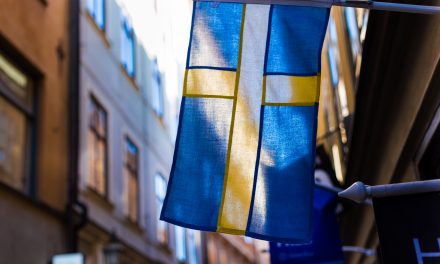After an imposing first half of the campaign, Arsenal sit at the summit of the Premier League table and are set up for a thrilling title race alongside the likes of Manchester City and Manchester United.
Mikel Arteta was prepared not to be left behind in the January market, as his side were last season, and after a failed pursuit of Brighton’s Moises Caicedo, the Gunners acquired three new signings to bolster their squad.
However, why did the North London club feel that they needed to strengthen the team? Below, we explore the ins and outs of why Arsenal were in the market for new signings and why they are willing to invest so heavily on new recruitments. You can find the latest spread betting odds on the Premier League here.
Running Out of Steam
After the departure of Pierre-Emerick Aubameyang in January 2022, the Gunners were expected to make a late move to add more options to their forward line.
Ultimately, despite looking good value for a top four finish, they failed to achieve their goal and finished in fifth last season. However, with Arsenal sitting at the top of the pile this time around and a similar situation unfolding with the injury to Gabriel Jesus, Sporting Director Edu would pursue additional targets.
Caicedo was one of the big names on the list and Arsenal took an aggressive approach in their pursuit of the Ecuadorian. However, Brighton held firm and would not sell one of their star assets in the winter market, despite Arsenal launching a bid worth up to £70 million.
Of course, this is a large outlay on just one player. This would have matched their previous record for Nicolas Pepe who has turned out to be a failure for the Gunners. Perhaps it seemed a little out of character for Arsenal’s recent approach to business, particularly under Edu’s regime, but in the end, Arsenal would do their business in a more sensible manner.
The Three New Boys
Shrewd acquisitions in the form of Jorginho for £12 million, Leandro Trossard for £27 million and Jakub Kiwior in a £21 million deal would end up being Arsenal’s January business, signing three players instead of one, and for less money.
Jorginho has come into the centre of midfield at the right time, with both Thomas Partey and Mohamed Elneny being injured. He has provided an excellent technical ability and was influential in Arsenal’s recent 4-2 victory away to Aston Villa.
Nonetheless, it is perhaps seen that Jorginho is a stop-gap and Arsenal will eventually go back in for Caicedo or Declan Rice in the summer, meaning that the Gunners still aim to invest a significant sum on just one player. Similarly, the club also targeted Mykhailo Mudryk and bid up to £80 million for the Ukrainian winger before he opted for a move to Stamford Bridge to join Chelsea.
The alternative was Trossard and he has imparted strong depth across the front line and will mainly compete with Gabriel Martinelli on the left-hand side, whilst Kiwior has added much-needed cover at centre-back.
Why Are Arsenal Willing to Pursue Big-Money Signings?
The feeling is that Arsenal would not sanction a large fee on a single player if they did not believe in their quality. Eyebrows were raised when they signed Benjamin White from Brighton for £50 million but he has excelled at right-back under Arteta, whilst the likes of Jesus and Aaron Ramsdale were also purchased for significant figures, thought to be over their true valuation. In hindsight, it certainly seems like Arsenal made a good decision with their recruitment.
A midfield acquisition has been on the cards at the Emirates now for some time. Partey has been excellent at the base of midfield but has had some fitness issues since joining the club, missing a number of key games. Elneny offers a solid backup option and the Egyptian has just signed a new deal that will keep him with the club until 2024, but the thought is that a player of higher calibre is required.
Moreover, despite Granit Xhaka having one of his best season’s in an Arsenal shirt, they would still like an upgrade on the left-hand side of central midfield or a player of sufficient quality to add strength in depth.
Both Caicedo and Rice offer the ability to play in a traditional role as a number six, as well as in a more advanced position as a number eight. Fabio Vieira has been deployed in a bit part role since joining from Porto over the summer but he is considered to be more lightweight than the aforementioned players and is likened more to captain Martin Ødegaard.
Albert Sambi Lokonga has not progressed as much as Arteta would have liked and has instead been sent on loan to Crystal Palace with the hopes that former Arsenal legend Patrick Vieira can help nurture his potential.
Is Sanctioning a Significant Fee On a Single Player Too Much Of a Risk?
It is quite rare that spending serious fees on just a single player becomes a worthy investment. Record signings in the form of Neymar, Kylian Mbappe and Cristiano Ronaldo over the years have proven to be a success, but that is because they had already established their world-class ability elsewhere beforehand.
However, many clubs have been burned in the past after splashing out huge sums on players who have the potential to be world-class but haven’t yet made it. The likes of Philippe Coutinho, Antoine Griezmann and Ousmane Dembele failed to live up to their astronomical fees, which left Barcelona in financial ruin.
Although, Arsenal have always been a big club and in the past have spent large figures on single players such as Mesut Özil, Aubameyang and Alexandre Lacaztte. Taking into account inflation, the £70/80 million fees are in line with the £50 million mark paid for those three.
Therefore, this is certainly not a new tactic for Arsenal and their impressive change in fortunes will likely lead to more spending as they look to challenge the rest of the elite clubs in Europe and become a top team once more, coupled with their savvy business elsewhere to bulk out the rest of the squad.











